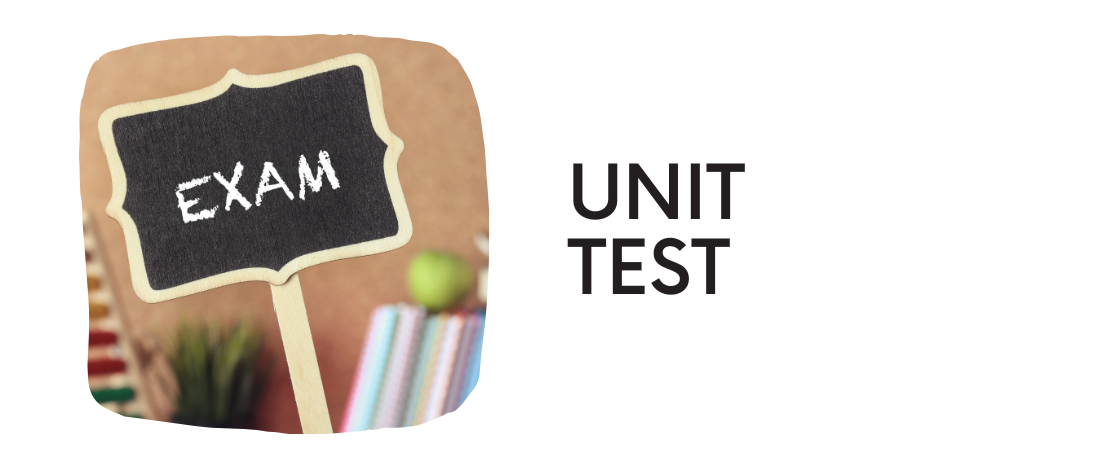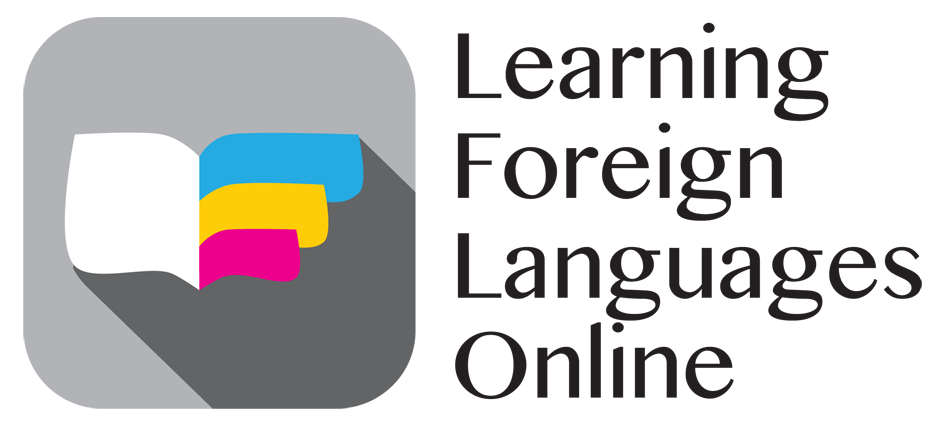
E-course
Needs analysis
Module 1 | Unit 1
Introduction
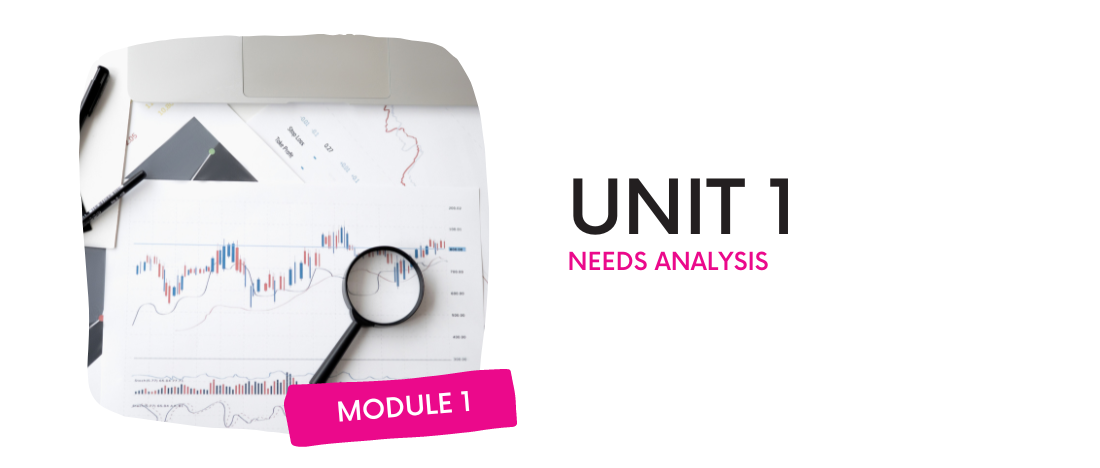
Learning needs analysis has a vital role in the process of planning and conducting any language course. According to Iwai et al. (1999), the term needs analysis generally refers to the activities involved in gathering information that will serve as a basis for developing a curriculum to meet the needs of a particular group of learners.
In order to successfully fulfil the learning processes learners must first understand their learning needs through a Learning Needs Analysis. These needs may include knowledge, skills, attitudes and behaviours necessary to perform a role correctly, effectively and safely. A major benefit of LNA is the ability for an individual to identify the skills gap they may have and how this gap can be effectively closed through more strategic learning and development.
Getting started

Tips

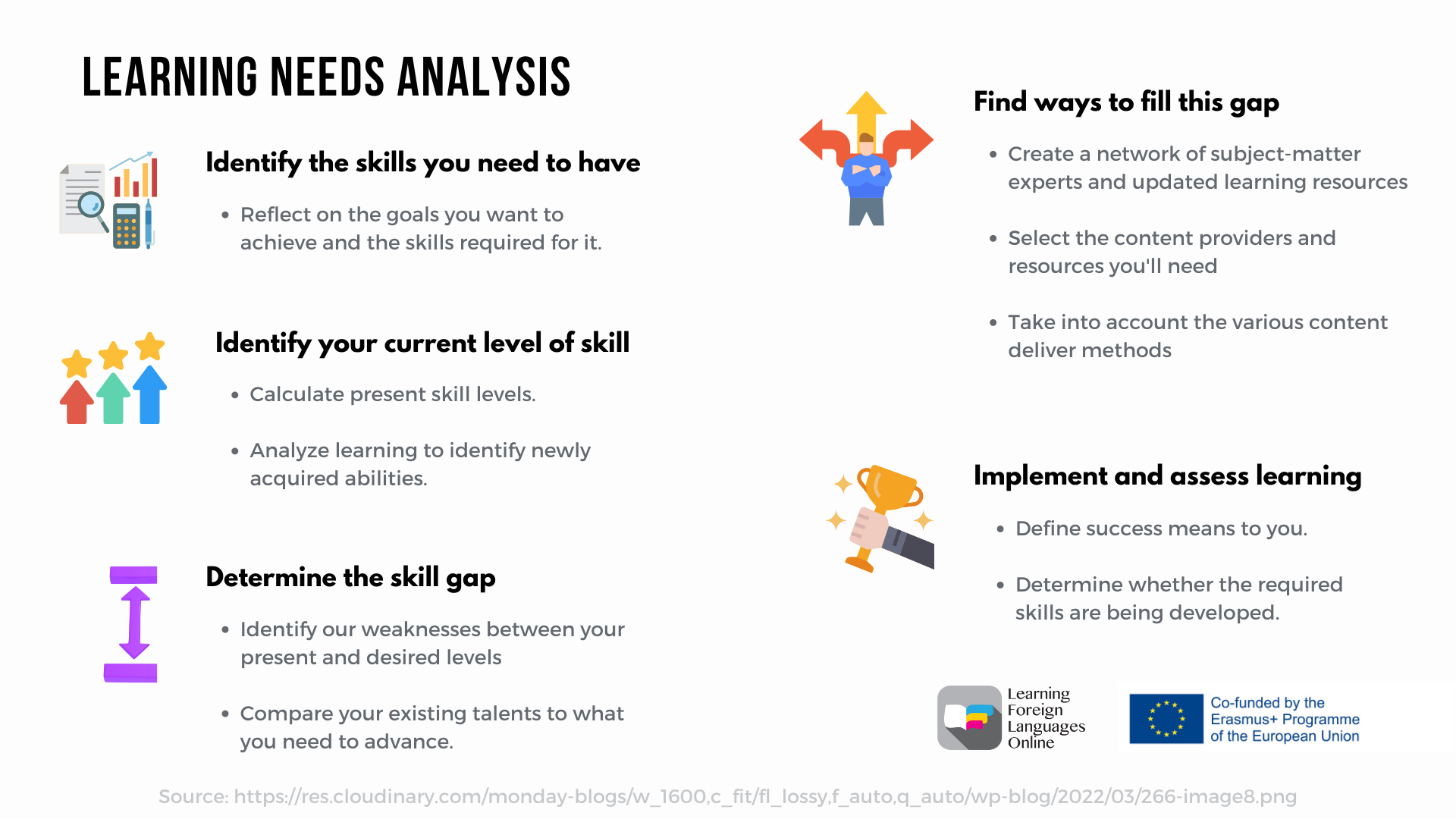
1. Which skills are needed to progress?
Think about what goals you want to achieve and what you lack – think of it as your initial needs assessment. If you don’t know exactly what you want, you can always gain insight from current job descriptions by analysing the skills listed to be able to identify the key competencies and sought-after attributes in relevant markets and roles.
P.S. Don’t let the list of skills scare you! You are more than capable of acquiring any of these skills, it just needs time and willpower!
2. What are the current skill levels?
At this point you really need to think about what you have achieved so far and identify what has helped you accomplish it. By reflecting on your progress, you will be able to point out your qualifications and assess them accordingly.
Another way to test your skills is through an online test. Skills assessment tests don’t give any weight to how you learned what you know; they measure what you can do. They are also routinely used for a number of recruitment and employee development initiatives.
3. Identify the skill gap.
Once the desired performance standards have been defined, the next step is to examine the gap between current and desired performance. The objective of this phase is to examine the gaps and to determine what kind of skills development can help closing it.
Therefore, if you compare the skills you need to acquire with the skills you currently have, you will find the skills gap.
A way to identify your learning gap is the following:
Use sample papers such as exam preparation sheets and exam sample tests. https://www.cambridgeenglish.org/learning-english/exam-preparation/
4. How can that gap be closed through learning?
Armed with the information you’ve gained about the skills you need and the skills you have, it’s time to get to work to fill the skills gaps.
Start by establishing learning materials and subject matter experts, so you will finally create a tailor-made resource list that responds to your needs. Creating all these resources for you would be another daunting task, so at this stage it is crucial to choose high quality and recognized sources. These sources can either be online learning platforms such as: Duolingo, Memrise, Lingualia, Busuu. Online communities with native speakers such as Lang 8, books, videos such as https://lingoclip.com/ which enhances learning in different languages through songs, podcasts such as https://www.fluent.show/, https://actualfluency.com/actual-fluency-language-learning-podcast/ and https://languagepod101.com/ or even read the news in a modified level https://www.linguistica360.com/ .
Furthermore, avoid focusing on a methodology based on grammar only. Look for communicative approaches that also pay attention to speaking and listening.
Use self-access material like the ones mentioned above.
Look for meaningful feedback, either web-based or from an expert in the target language. There are several software such as https://writeandimprove.com/ that provide fast feedback when producing written speech.
5. Implement training courses and evaluate.
You have finally reached the last step of this analysis! Now the only thing left is to evaluate the progress you are making.
Begin by checking whether you are developing the required skills, which can be influenced by the learning platform. If something doesn’t line up with what you’ve already learnt or you think it’s not working, then you may need to review the learning tools you’re using.
Here are some practical ways to track your progress:
- Reflect on the quality of your language habits. For instance:
- Do you practice every day?
- Have you adopted an effective learning schedule?
- Do you extend the limits of your skill set beyond your comfort zone?
- Do you take notes and evaluate how effective your learning sessions were?
- Are you learning from your mistakes?
- Map out the advancement you’re making on your path. In essence, a map can be a chart or framework that categorizes the entire process of learning a language into several levels and skill sets, ranging from complete novice to fluency comparable to a native speaker. The Common European Framework of Reference, or CEFR, is the most well-known of these frameworks. Starting with level A1 and on through levels A2, B1, B2, C1, and C2, there are a total of six alphabetic levels.
- Create vocabulary lists as you learn, review them, and use them again. Repetition is the mother of learning.
- Consider reading something you previously found challenging again. Compare whether it is easier for you to understand the text now or not.
- Consider viewing a film or TV show again that you had trouble following the first time. Here are some tips about learning languages through movies: https://www.fluentu.com/blog/how-to-learn-a-language-by-watching-movies-2/
- Try out online evaluations and competency tests such as https://www.languagetrainers.com/level-tests.php or https://dialangweb.lancaster.ac.uk/
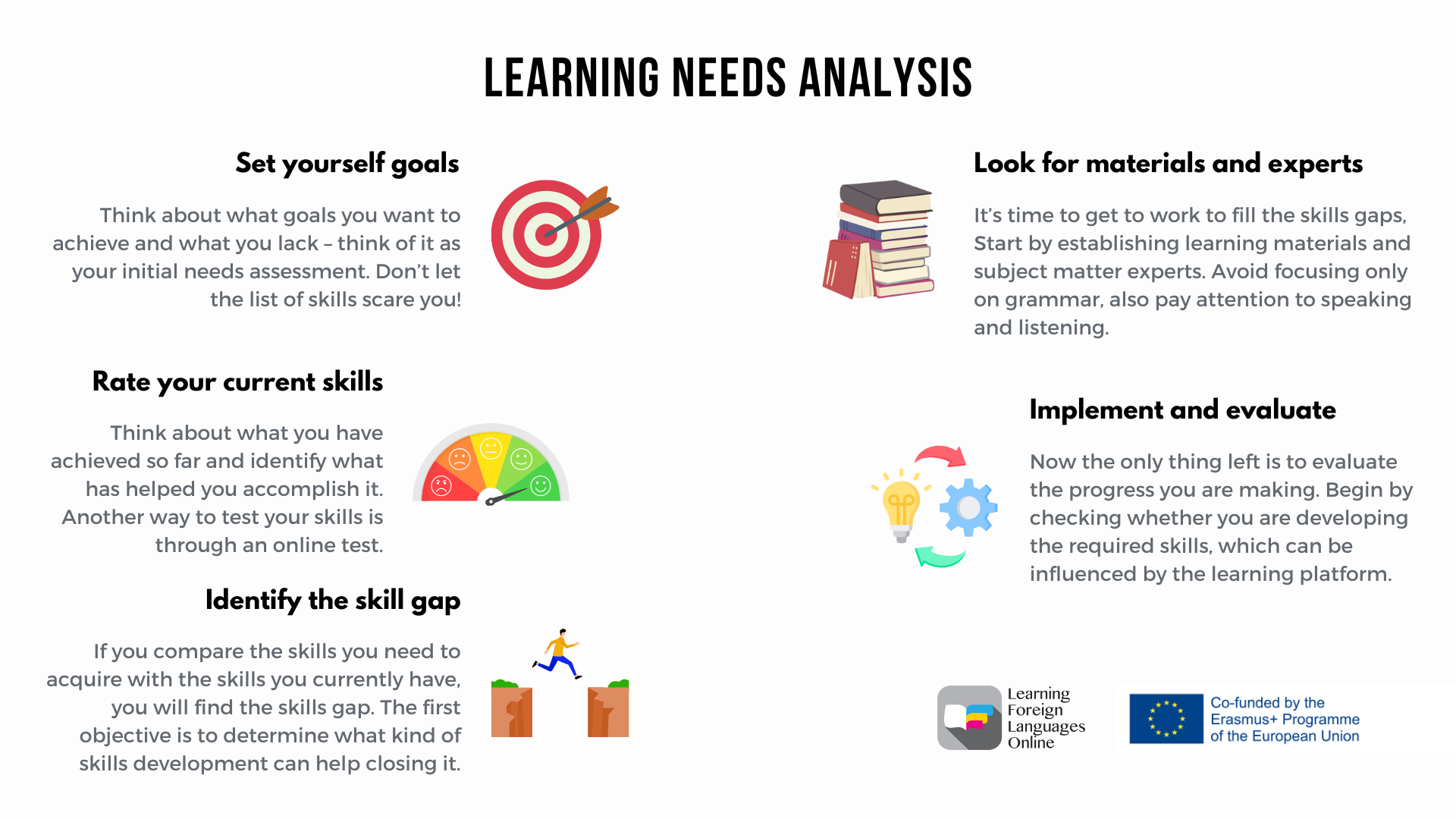
More resources

Still want to continue learning about the topic of this unit? Not to worry, we have made a selection of further resources that you can use if you would like to find out more. Just click on the links and keep learning!
Practical tasks
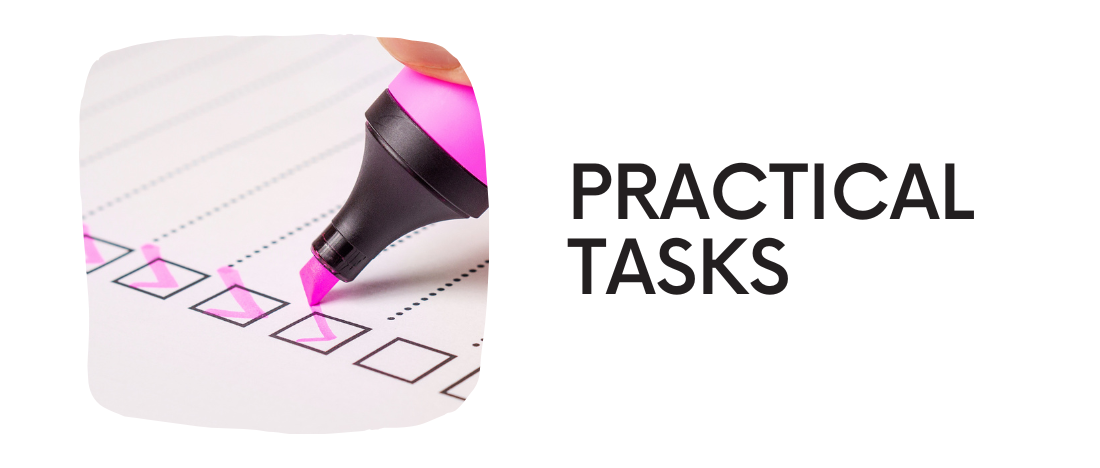
Annex 1
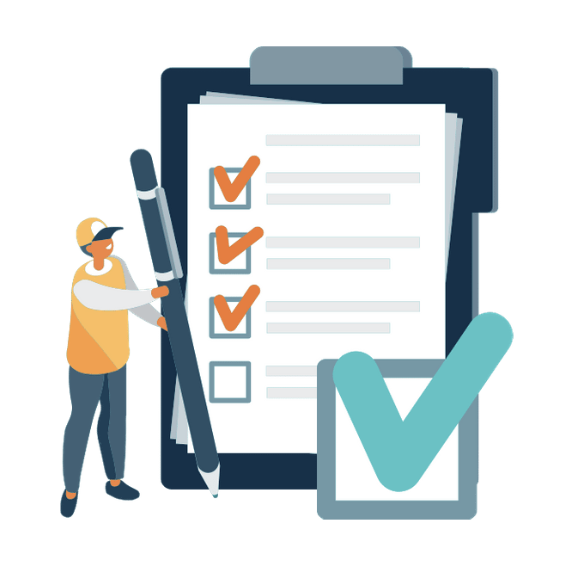 Below you will find the Learning Needs Analysis Questionnaire. The deadline for completion is before the first day of your language courses.
Below you will find the Learning Needs Analysis Questionnaire. The deadline for completion is before the first day of your language courses.
Please take the necessary time to complete this questionnaire as honestly as possible. It is a critical step in creating your personal training plan meeting your specific needs and enabling you to achieve successfully learning a new language.
The only purpose of this survey is to help you identify training priorities. The results have no other purpose, as long as they help you to identify which areas you most want training or development.
In addition, this questionnaire can work as self-assessment evaluation. When you complete your language courses, review your answer in the question about your expectations. Did you meet them?
Thank you for taking the time and focus to complete this.
-
Do you know any other language except of your mother language?
- Yes
- No
- If yes, please, type which language you already know. (This question will motivate you to search for languages which are considered as “sister” languages and decide if you would like to go for them or reject them).
- If yes, please, identify which was the learning method that you followed? (You can choose more than one choice).
- Formal education
- Non-formal education
- Face to face courses with language teacher
- E-courses with language teacher
- E-learning platform
- Apps
- Class learning
- If yes, what was your experience regarding the learning method e.g. was it bad or good? (This question will help you to understand your preferences).
- Why would you like to learn a new language?
- To upskill myself
- To find a new hobby
- It is required for a job position
- To obtain one more language certificate
- To communicate with peers
- Moving to another country
- Please, indicate how much time you could dedicate to studying/learning?
- Once a week
- Two – four times a week
- Which is your preferred duration of training?
- 3 months
- 6 months
- 1 year
- Rate if you can evaluate your skills. For example, can you evaluate yourself and understand if you are more efficient in writing, reading, speaking or listening? (Liker Scale where 1- lowest, 5-highest).
- 1
- 2
- 3
- 4
- 5
- Rate if you are able to identify your gaps during the learning process in order to fill them. (Liker Scale where 1- lowest, 5-highest).
- 1
- 2
- 3
- 4
- 5
- Do you need guidance through this process?
- Yes
- No
- What are your expectations?
After reading the unit, try to implement the following tasks:
- Identify the skills you need to develop in order to achieve your goal. Use ongoing assessment by completing sample papers or online language test https://www.cactuslanguage.com/language-level-tests/such as exam preparation sheets and exam sample tests. https://www.cambridgeenglish.org/learning-english/exam-preparation/. Create a chart keeping your scores so you can later track your progress down.
- Measure your current skills levels using the information provided above. Use the Common European Framework of Reference, or CEFR, which is the most well-known of these frameworks. Here is self-assessment grid in different target languages that you can use: https://www.coe.int/en/web/common-european-framework-reference-languages/table-2-cefr-3.3-common-reference-levels-self-assessment-grid. Another useful link for measuring your level is the following https://cesalanguages.com/your-ability-assessing-your-language-level/
- What is the difference between your existing and desired skills? Try preparing a table containing all the skills that you have already acquired and all the skills that need to be acquired in the future. Make the comparisons and reflect.
- Propose solutions to fill this gap. Here are some exercises that you can follow:
- The first tip is to dedicate 10 minutes each day for word practice. Are there any prefixes or suffixes visible? Can you recall the word’s noun, adjective, or adverb? Can you come up with any terms that it rhymes with? By doing this, you foster word-curious learners and increase word awareness.
- Word sorting: there are many ways learners can sort words, by parts of speech, connotations etc. One way of sorting is to type words on cards that all have a similar meaning, such as happy, delighted, pleased, thrilled, ecstatic. Find a synonym or an antonym and then use the word in a different context.
-
Make flash cards of new words. Carry them with you and recite them several times during the day.
-
Write a story you just read in your own simple words in the target language.
- Watch movies using subtitles in the target language.
- To enhance reading skills, read the vocabulary list first. After that, read a new passage through twice or three times while inferring meaning from context. Steer clear of literal translation.
- For more advanced learners, repeat a conversation you’ve heard or read from any media.
- Produce creative content in podcasts, social media, Youtube or any other platform.
- How will you know that you are succeeding in the learning process? Describe what will be the indicators of success.
Tip: You could draw up a template so that you have a more visual representation of the situation you are in and the gaps you need to fill.
Unit test
